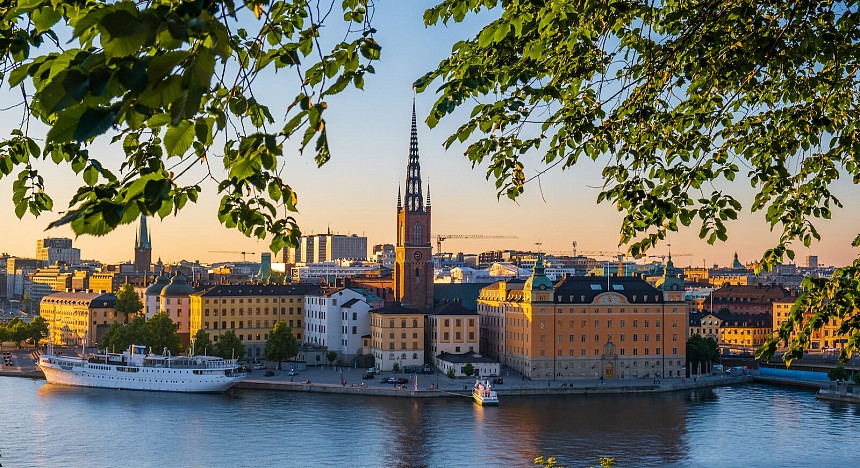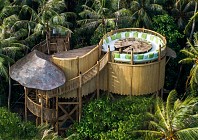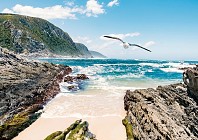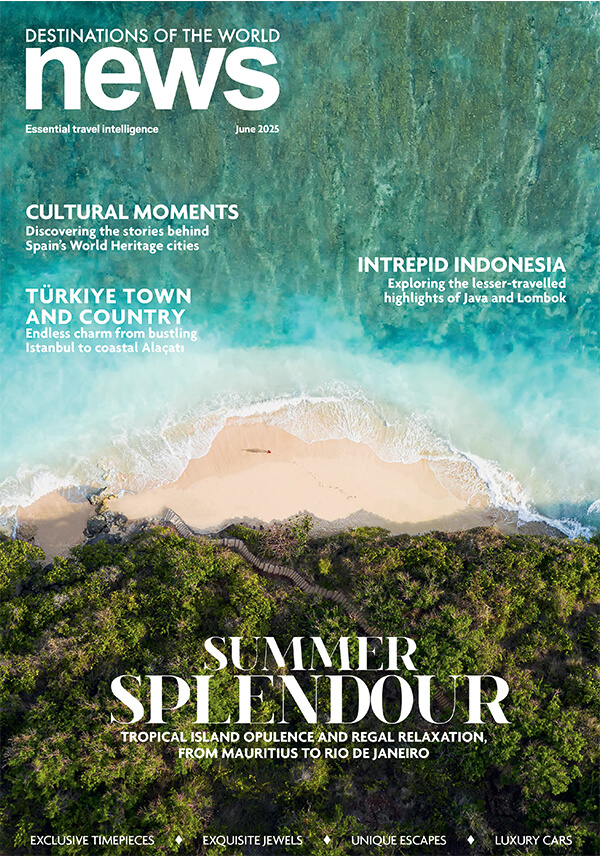Stockholm, the ‘Venice of the North’, is no ordinary European city. Sitting across 14 islands, on the banks of the Stockholm archipelago, where Lake Mälaren meets the Baltic Sea, the Swedish capital is a smorgasbord of surprises. There’s a Viking warrior ship, glittering Royal residences and an utterly charming old town. Then there’s the food. Breakfast of herrings. Pickled, of course. And the world-famous meatballs. Not forgetting the native pop royalty that is Abba. All swept up in Stockholm’s minimalist, clean-living approach. Arrive at this watery perch and you’ll find handsome historic buildings lining the waterfront. But look deeper, wind your way through the verdant parks, the maze of islands and you’ll find this elegant easy-going spot is not stuck in the past. It’s thoroughly modern, ever-cool and continually dynamic – with a seriously good art scene to match.
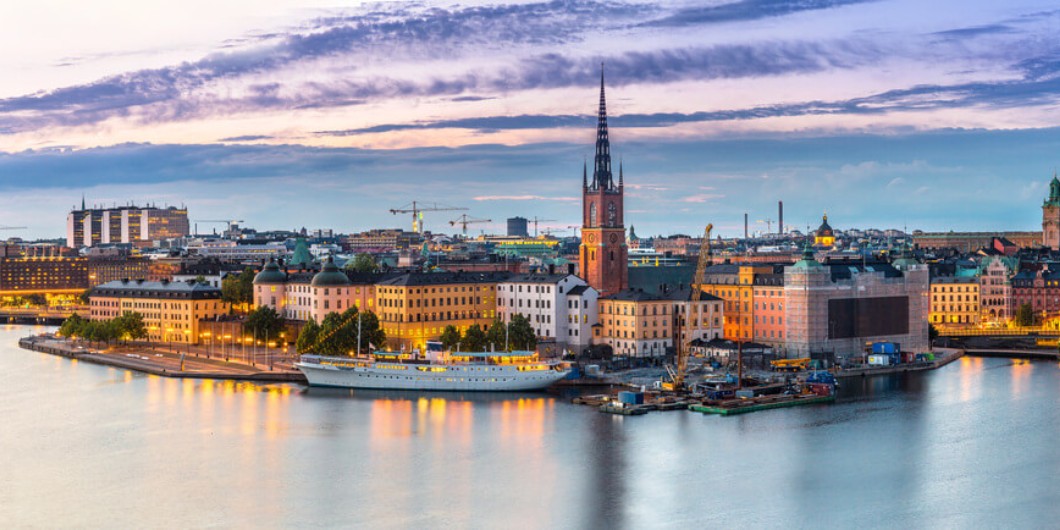
Chinese artist Ai Weiwei is one of the latest artists to make a splash in the city. Last summer, he joined forces with Brilliant Minds, a foundation launched by Stockholm-born Daniel Ek, co-founder of Spotify, to foster his home city’s creative industry. The result is Arch which stands proud outside the Nationalmuseum, Sweden’s largest art museum, which reopened in 2018 after a five-year, £100 million renovation project. Today, the shiny space is filled with paintings, sculpture, drawings, decorative arts, and graphics, celebrating the Middle Ages right up to the achingly contemporary.
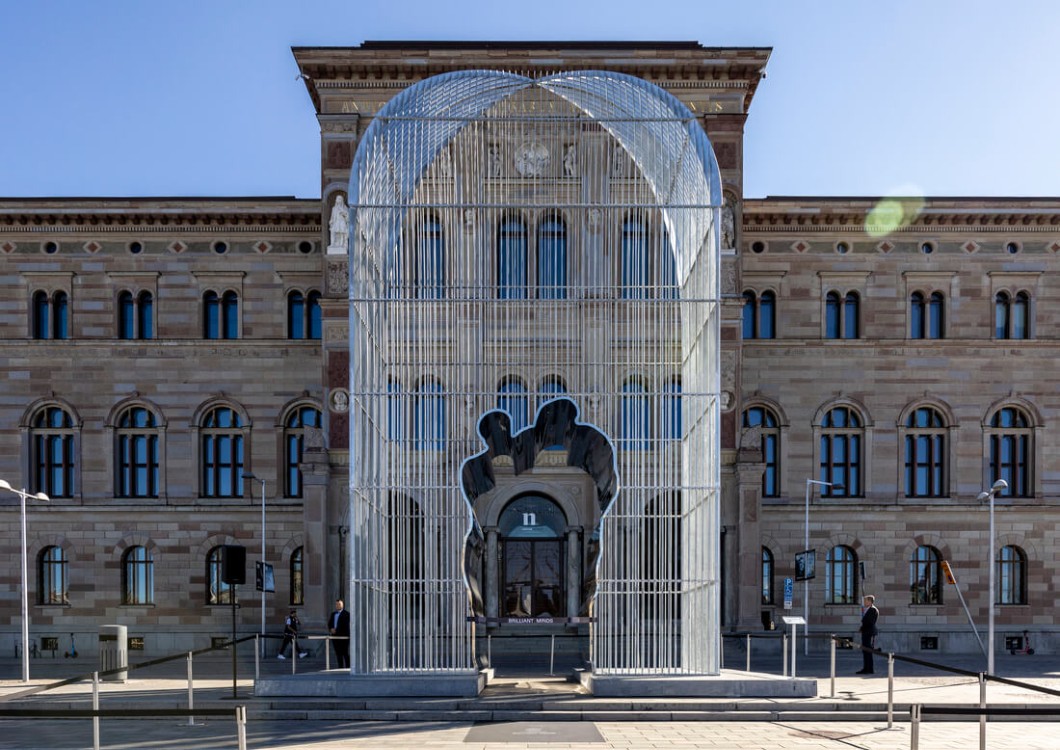
As we approach the museum on the picturesque Blasieholmen peninsula, Arch is not hard to miss – a soaring cage-like structure of polished steel, pierced by the silhouette of two intertwined human figures. It is currently waiting a permanent home in Stockholm (soon to be announced) but the social message behind it remains unwavering and searingly relevant: an ode to freedom representing ‘free passage of all populations and appealing for a world without borders.’
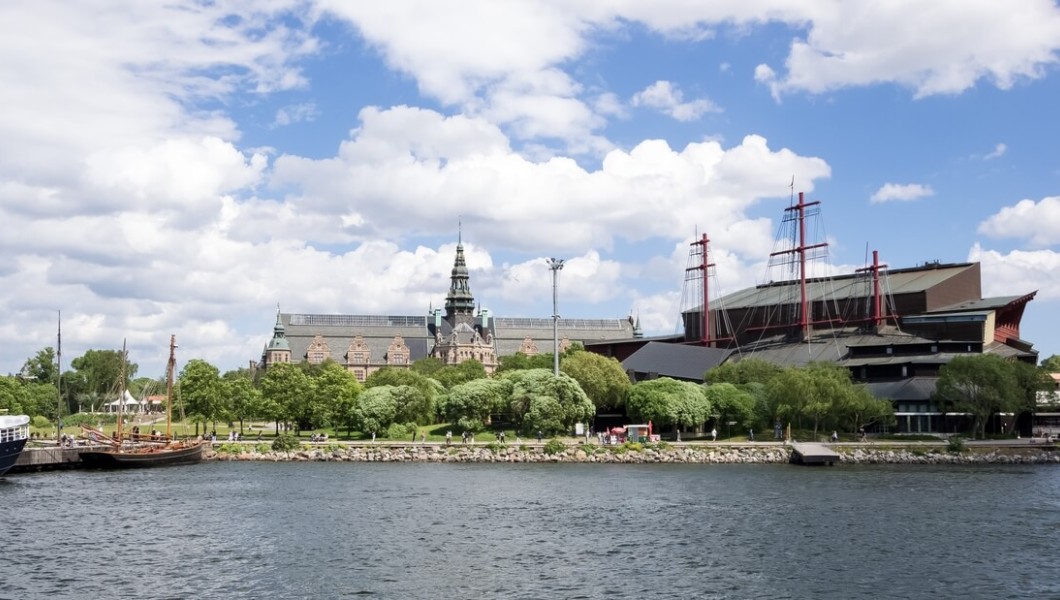
Moving with the times is a key part of the Nationalmuseum. Last year, it won brownie points for carving out space for women’s sculpture, with a ground-breaking showcase of 20th-century Swedish female sculptors. This year, there’s an exhibition looking at American Crafts in the Nordic context, which we explore taking in gold brooches, silk paintings and bone perfume bottles, all assembled by pioneering American gallerist Helen W. Drutt English.
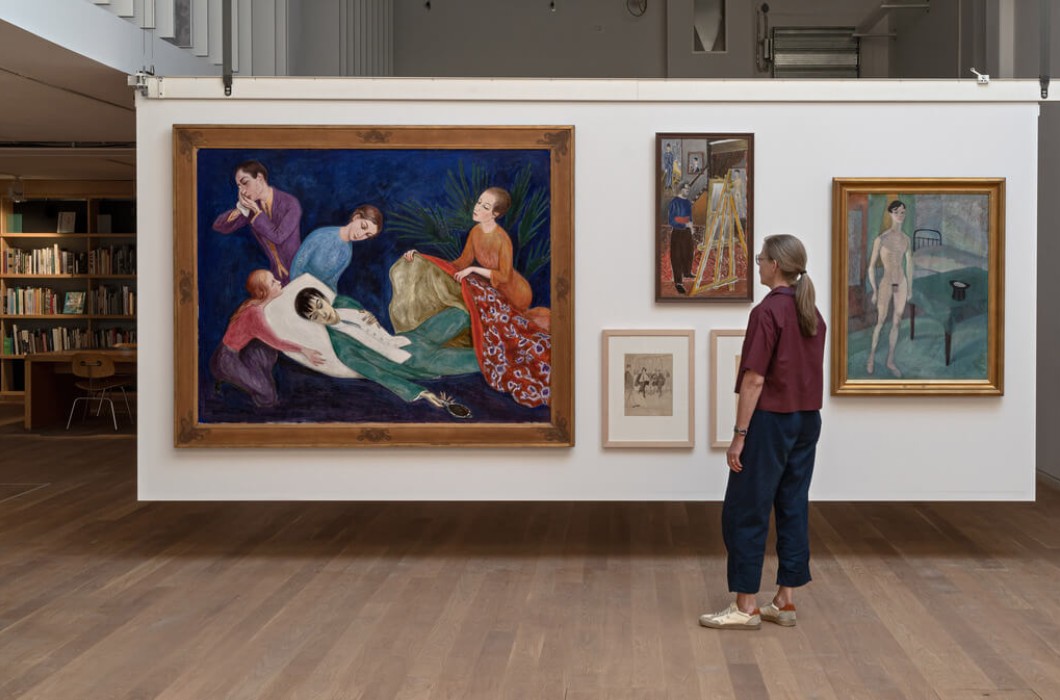
A short walk away, just across a small footbridge, on the island of Skeppsholmen, is the Moderna Museet, one of Scandinavia’s most important art museums. In the 1960s, it was where Andy Warhol first exhibited outside of the United States. And the museum is easy to spot thanks to another American artist, Alexander Calder, whose towering Four Elements, representing air, water, earth and fire, decorates the entrance. It is bold and intriguing. Our appetite whet, we step inside.
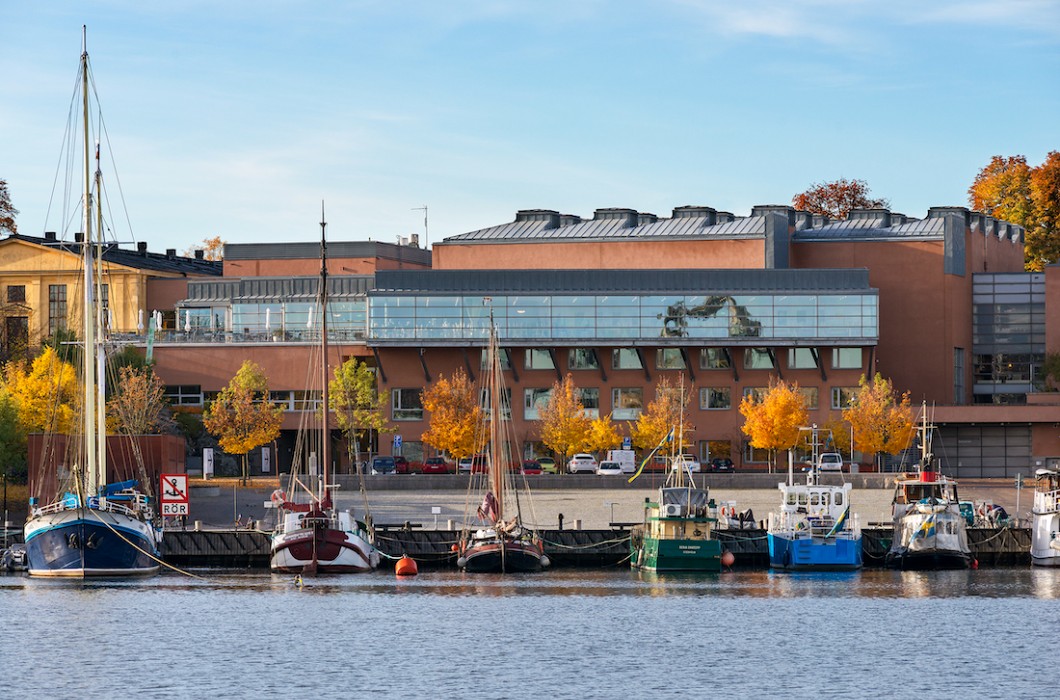
The length, breadth and ambition of the collection is extraordinary from Swedish modernism to emotional video-based exhibits to seminal works by greats such as Picasso and Dalí. The outdoor collection and a sculpture garden are equally impressive particularly Per Kirkeby’s labyrinthe roofless building Untitled. However, the number of people studying in every corner of the museum moves me most. This is a city fostering the next generation of artists.
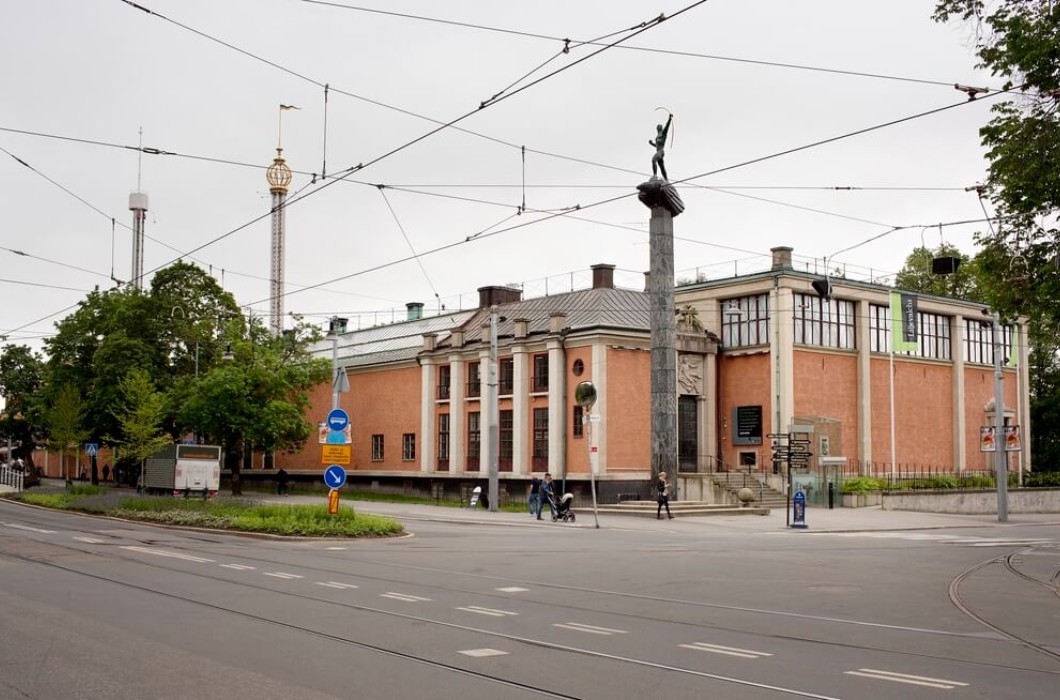
Stockholm, the ‘Venice of the North’, is no ordinary European city. rather, It is a smorgasbord of surprises.
We stroll across another footbridge to Djurgården, ‘Museum Island’. Once a royal game reserve, which looks straight out of a Grimms fairy-tale with its dreamy woodlands, the island is now home to some fantastic museums. We visit Liljevalchs Konsthall, founded over a century ago, showing contemporary Swedish and international art. In July 2021, the museum opened Liljevalchs+, a three-storey house, just behind the existing building, with a façade of nearly 7,000 transparent crystal-clear glass bottle bottoms. It is a phenomenal sight and a brilliant backdrop for the current exhibition of Stockholm artist Jockum Nordström, best known for his mind-boggling collages.
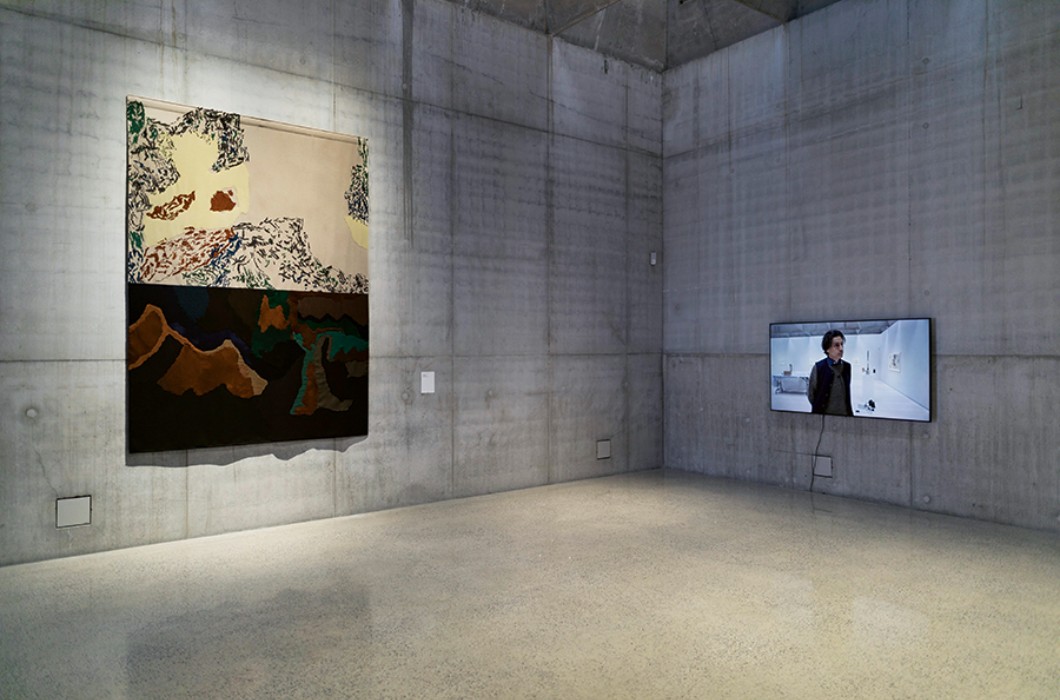
However, the big thing at Liljevalchs is the popular Spring Salon, an annual jury-judged exhibition, known for producing a wonderfully eclectic array of work – this year saw a still-life rendition of a Swedish Christmas dinner, a cast of tyre tracks going through mud, a cartoonish bronze gnome clinging to a shoe and summery landscape paintings. “A normal Spring Salon should include something beautiful, and something ugly. Something marvellous and something slightly dangerous and provocative,” says Liljevalch’s director Mårten Castenfors.
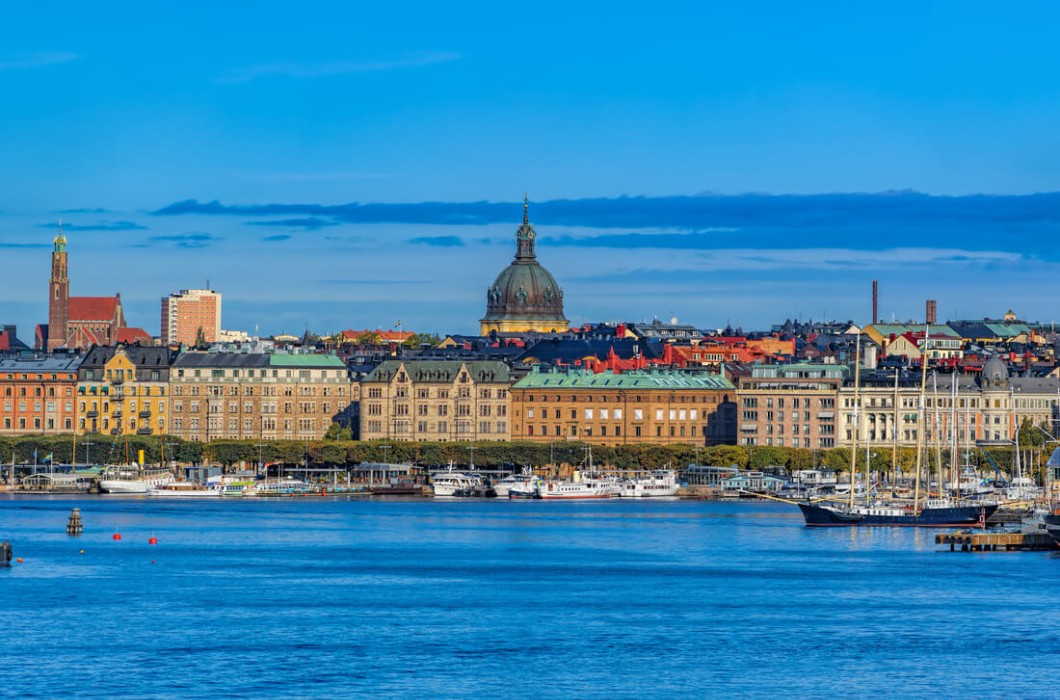
We walk back along Strandvägen, the waterfront boulevard in Östermalm, one of the most luxe addresses in town. Completed just in time for the Stockholm World’s Fair 1897, turreted Art Nouveau buildings now mix with buzzy restaurants, waterfront bars and yachts bobbing in the water. Continue walking and you come to Stureplan, with its high-end design houses, thriving brasseries and cocktail clubs (stop for dinner in newly-opened Villa Dagmar). Restaurant Brutalisten, founded by the experimental German artist Carsten Höller, opened near here last year. It’s a lesson in culinary minimalism, stripping dishes down to the bare essentials and proving that art in Stockholm is not just found in galleries.
_4k-e99w3w.jpg)
The Radisson Collection Strand Hotel is the place to stay which everyone talks about thanks to its brilliantly central location and illustrious past guests, including Ingrid Bergman, Audrey Hepburn and Greta Garbo, who once declared this glorious Grande Dame her ‘second home’. Originally opened in 1912 for the Olympic Games, it was beautifully renovated top to toe five years ago by world-famous Swedish architectural studio Wingårdhs, who brought the hotel back to its former glory. Now with 170 rooms, it’s a modern designer haven – think the famous drop chair by Danish designer Arne Jacobsen, Michael Anastassiades’ Captain Flint floor lamp for Flos and Gubi’s Stay Lounge Chair by Space Copenhagen. Bold pieces by local emerging photographers line the walls such as theatrical artist Klara G.
_4k-akjqz8.jpg)
Our suite is sleek and striking with stunning views of the waterfront. Enveloping velvet armchairs, sweeping curtains and globe-shaped pendant lights sit alongside an industrial-style bathroom and geometric flooring. However, the hotel restaurant steals the show, housed in a soaring indoor atrium, twinkling under 360 hanging LED lights, serving excellent food to boot.
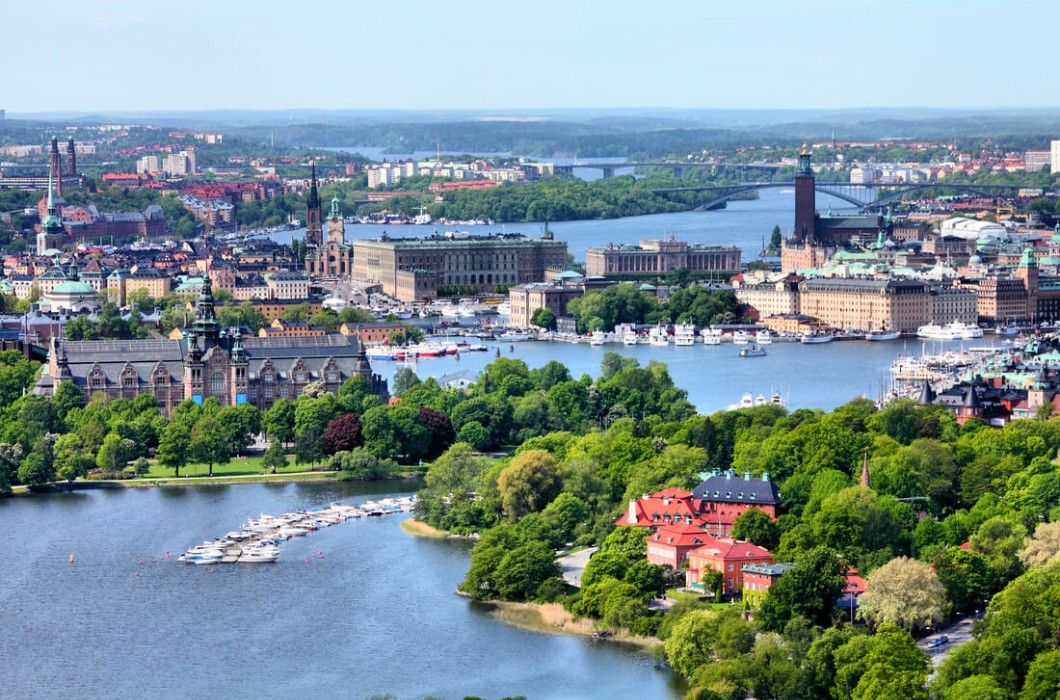
Stockholm is delightfully easy to navigate by foot. We stroll to Gamla Stan, the delightful cobbled old town. It’s the Kungliga Slottet (Royal Palace), one of Europe’s largest palaces, that shines here. Still the Swedish monarch’s official residence, we wander around the grand courtyards then head inside to see the state rooms – all are magnificent, but my favourite is the Hall of State with Queen Kristina’s iconic silver throne.
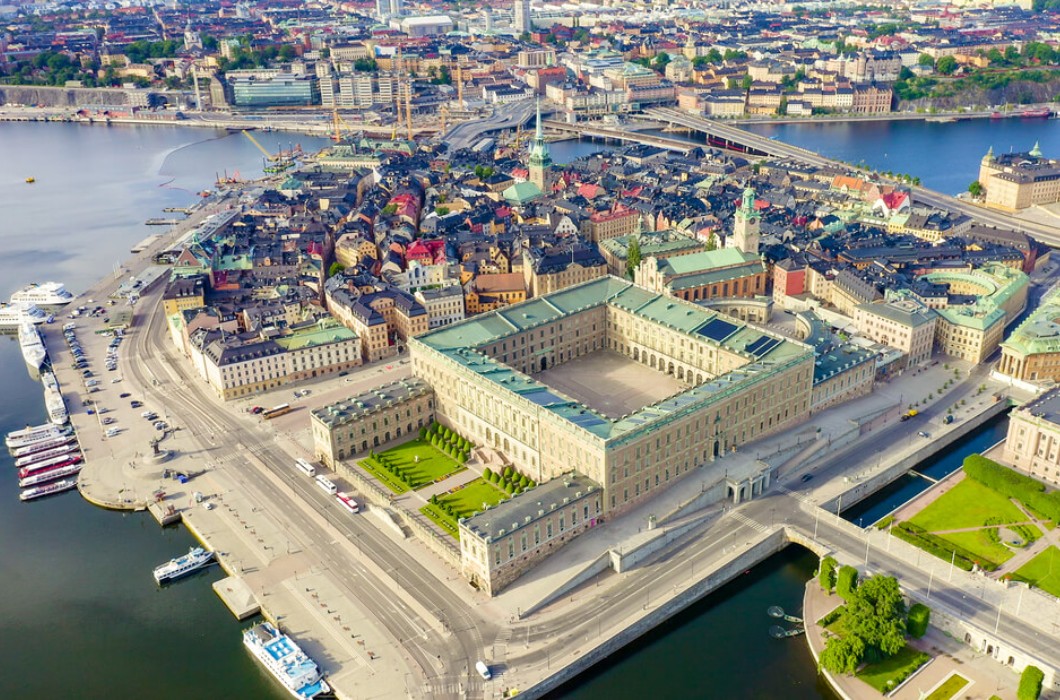
The palace also gives a fascinating historical insight into Stockholm’s passion for art. We are spoilt for choice with the residence housing three museums including Gustav III’s Museum of Antiquities, opened in 1794 to highlight the monarch’s protection of the free arts. And while there’s no modern art, it’s an impressive collection: ancient sculptures from Gustav III’s trip to Italy, the statue of the Greek mythological shepherd-prince Endymion and the work of court sculptor Johan Tobias Sergel.
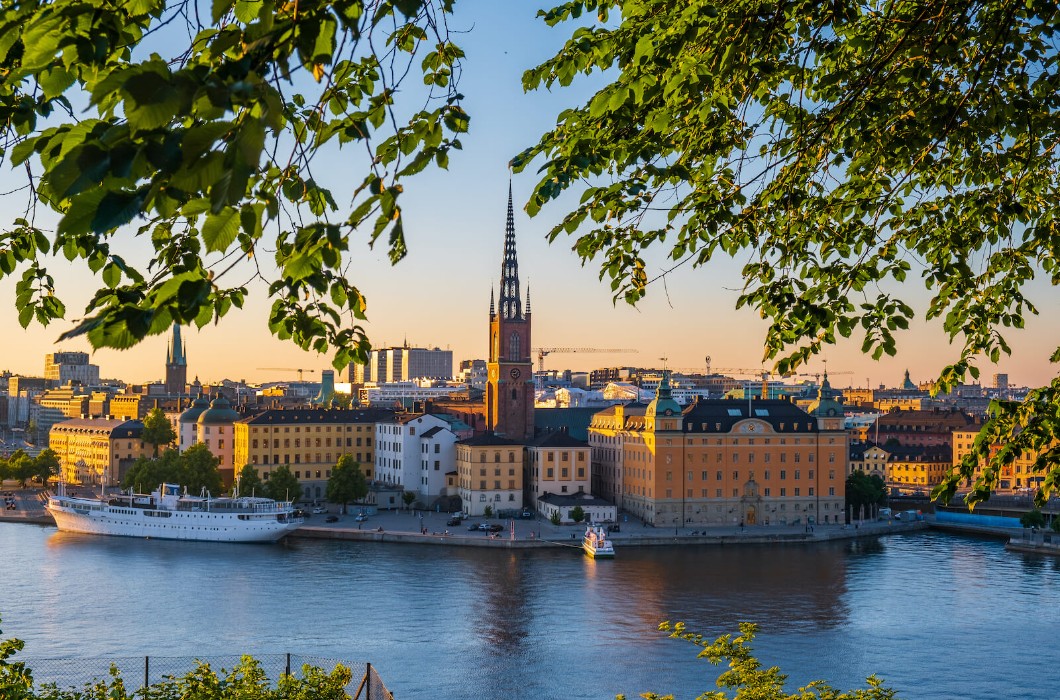
Stockholm, like all cities, has chapters of personalities. Just across from Gamla Stan is trendy Södermalm. A slum in the 18th century, this district is now a creative hub with art galleries, vintage clothing stores, eclectic cafes and indie music venues. It’s also the home of photography museum Fotografiska, which has outposts in New York and Tallinn. Further spaces are due to open later this year in Berlin, Shanghai and Miami.
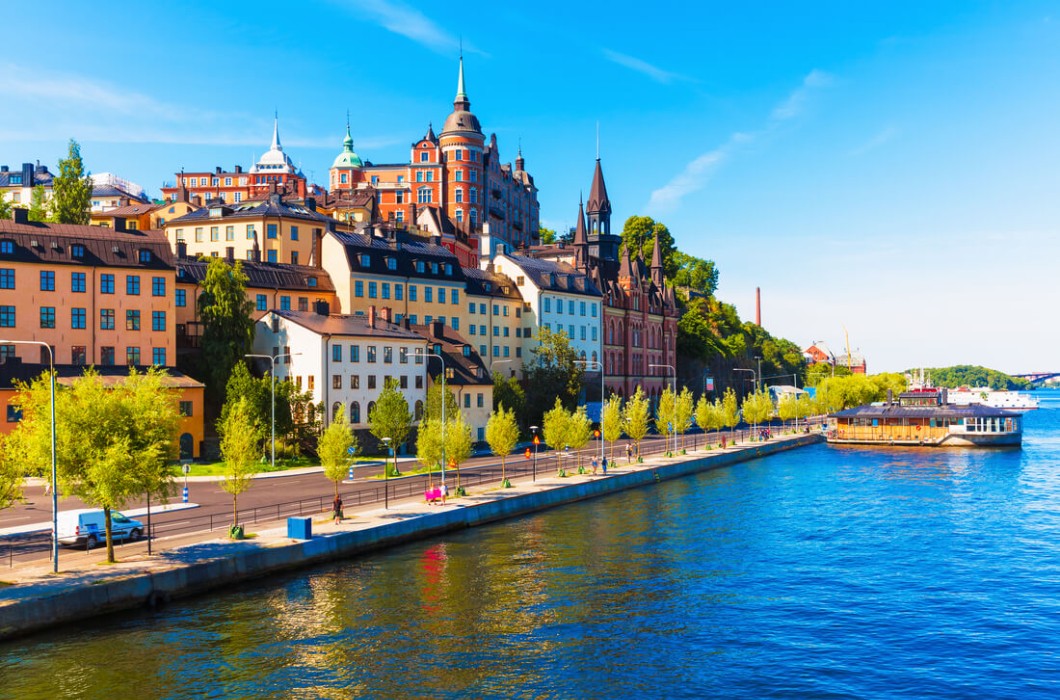
Housed in a former customs Art Nouveau building on the waterfront, the aim of Fotografiska’s collection of Swedish and international photographers is, in the museum’s words, ‘to inspire a more conscious world’. Big names such as Annie Leibovitz and David LaChapelle mingle with highly successful Swedish artists Helene Schmitz and the duo Inka & Niclas. It’s controversial. Glamorous. Mysterious. We take in the fantastical nature-inspired images of current exhibition In Bloom before heading into the thronging café, marked by a neon radish on the wall. And the buzz continues with Fotografiska Studio Live next door with its programme of music, DJs, podcasts, and poetry lasting well into the night.
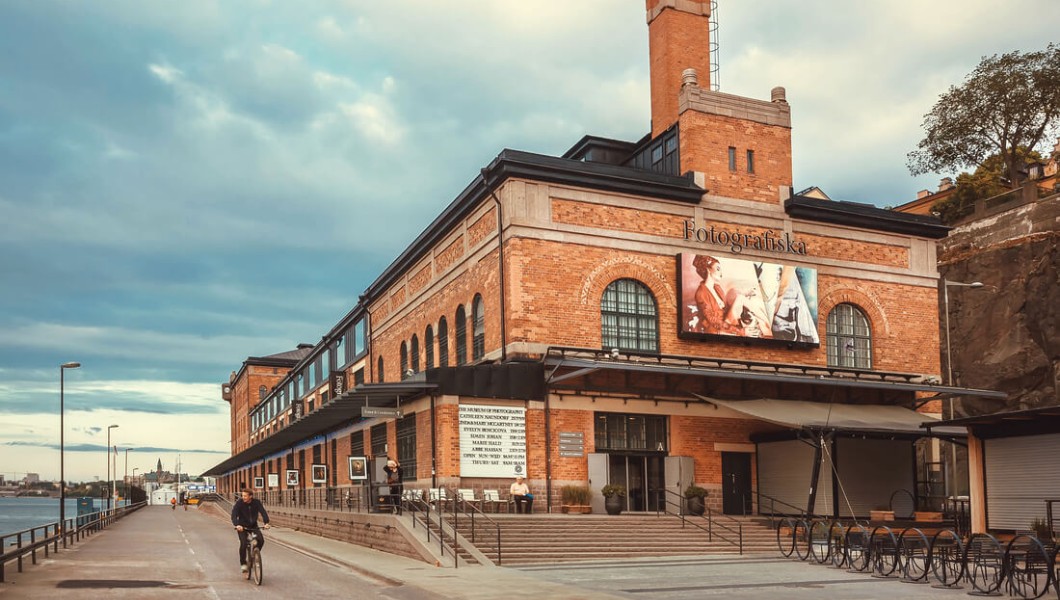
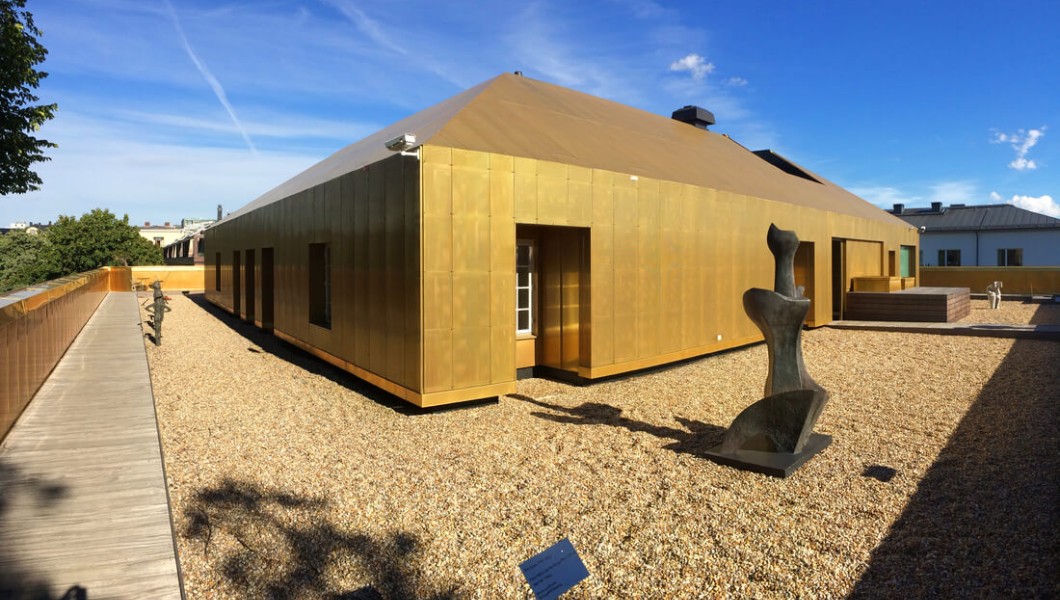
Next, we head to Vasastan, Stockholm’s Gallery District, the other side of the city and home to Sven-Harrys Konstmuseum, in verdant Vasaparken. An art gallery and collector Sven-Harry Karlsson’s home, it’s a generous space displaying one of Sweden’s largest private collections of Nordic art – particularly the work of Carl Fredrik Hill who made his name for his transportive landscapes. Just don’t miss the rooftop space, a replica of Karlsson’s 18th-century manor house, packed with further atmospheric art.
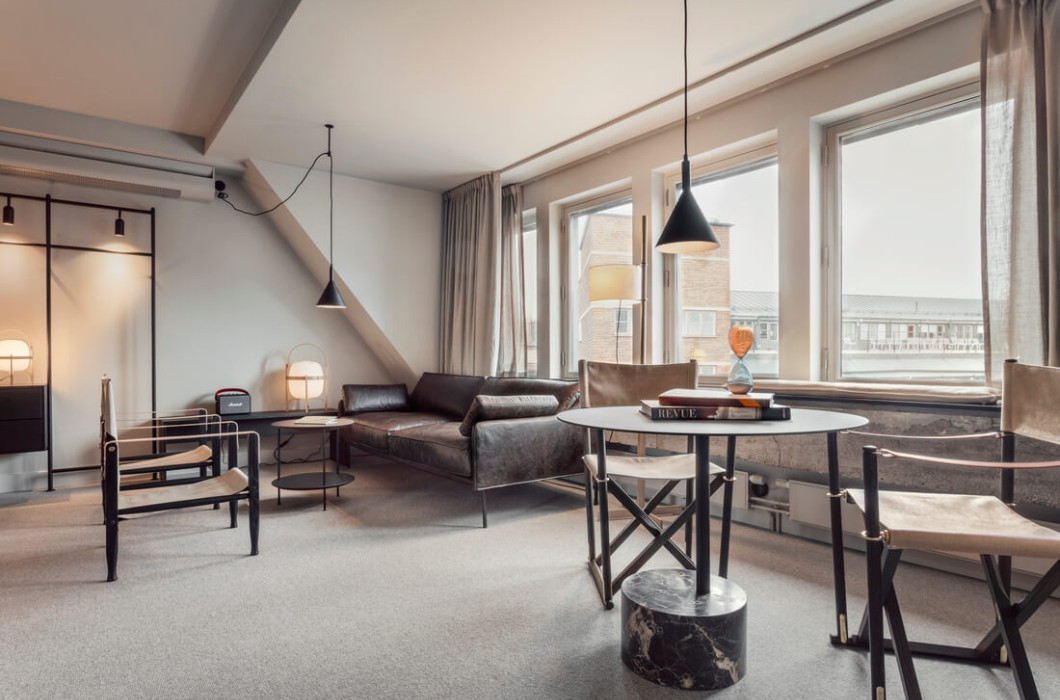
Another big hitter gallery Bonniers Konsthall is just around the corner. It’s an ambitious offering but one which works. The selection of international contemporary art is inspiring, complemented by a reading room, excellent café and action-packed roster of art talks and artists-in-conversation sessions. We stay in Blique by Nobis in neighbouring district Hagastaden, another arty hotspot with kooky galleries gradually infiltrating the industrial buildings. Just like its location, the hotel is an art-filled affair. Originally designed by Swedish architect Sigurd Lewerentz, architecture and art combine to produce a cool hotel, with eye-catching contemporary pieces, including an angular, geometric sculpture by American artist Joel Shapiro in the lounge. The Blique talk series is a great success, too, featuring leading Scandinavian creative talents.
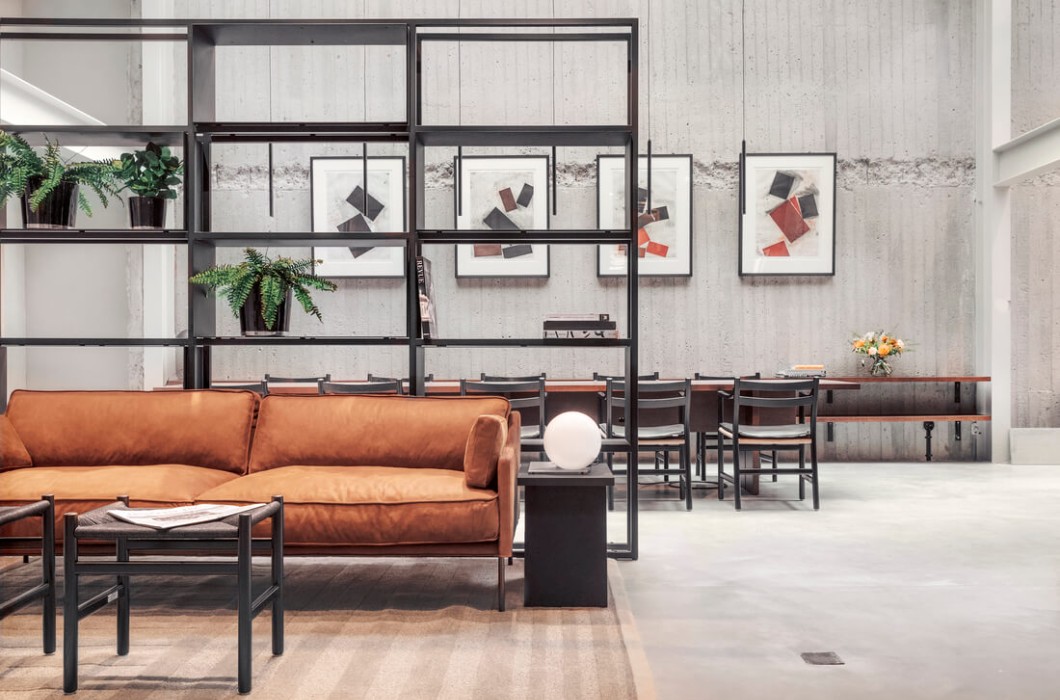
The hotel is also near to our next stop: Haga Park, founded by Gustav III in the late 18th century whose vision was to create an ‘English park’. And he did a good job – this is one of Sweden’s most popular green spaces and the setting of Haga Palace, the residence of Crown Princess Victoria and her family. However, we are searching for the wooden studio (now a museum) of 20th-century sculptor Carl Eldh, one of Sweden’s most prominent sculptors, which lies atop a hill in Haga. And it is worth the climb for the 1,000 sketches, original models in plaster and portrait sculptures in clay, marble, and bronze. The museum also contains Eldh’s private art collection, including both well-known and less famous artist friends alongside newly-produced exhibitions of present-day artists. We coincide with the work of Ingela Ihrman – a boundary-pushing artist who has tackled invasive weeds, intestinal flora and obese chicks that live in dark caves.
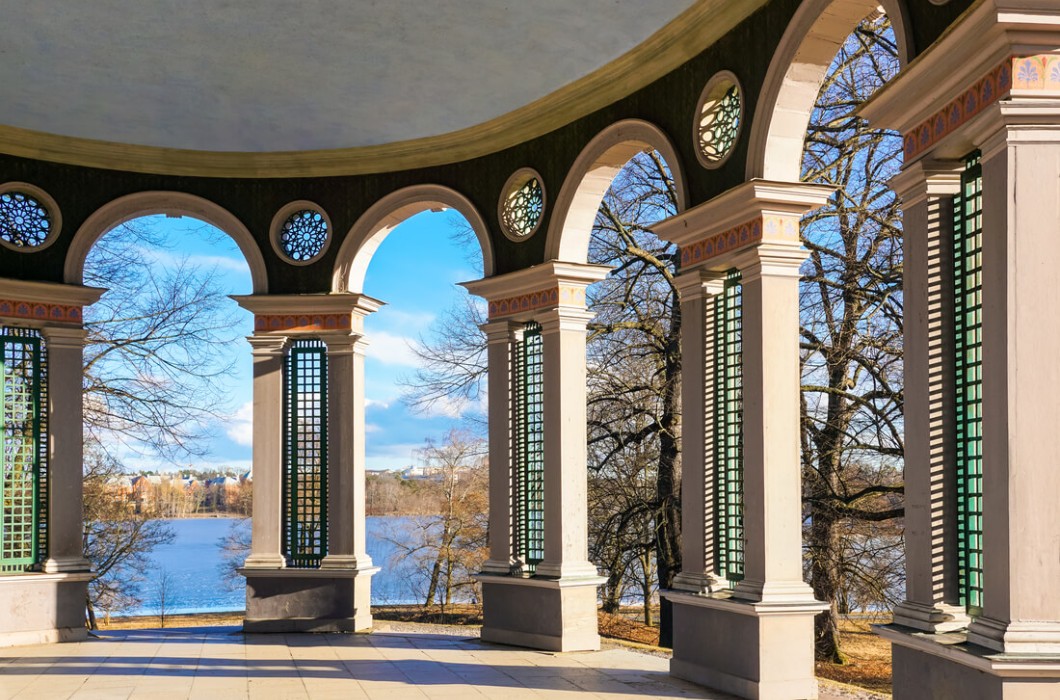
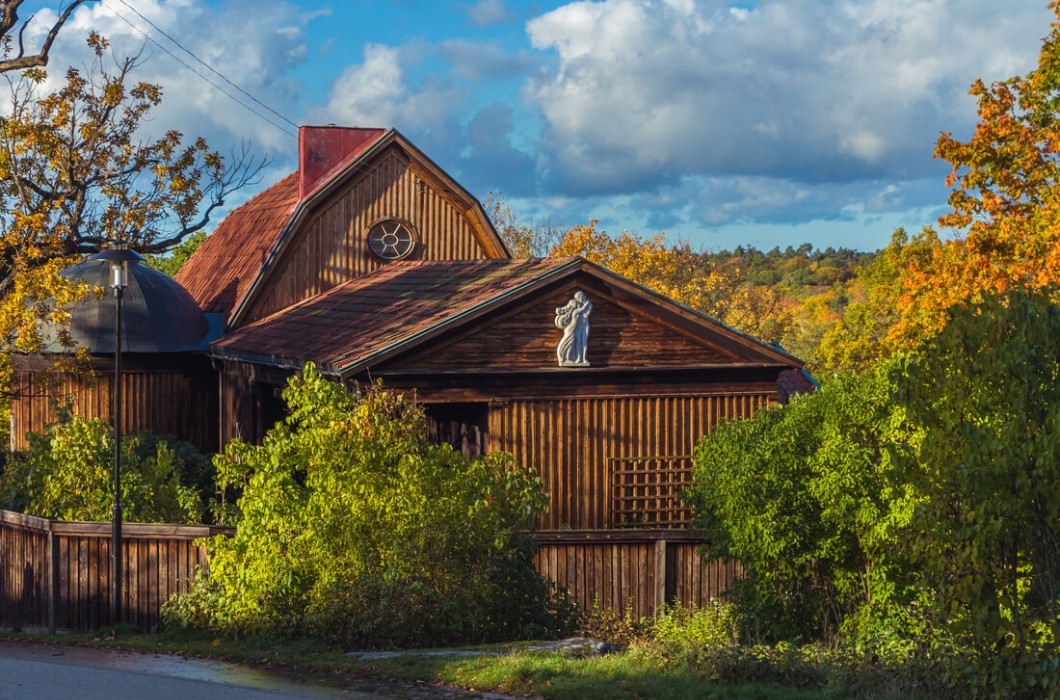
There’s enough in Stockholm city to keep you occupied but the archipelago is spectacular, with around 30,000 islands. We drive to pine tree-filled Värmdö, the location of Artipelag, a cultural venue where art cleverly blends into the surrounding landscape, complemented by lovely views of Baggensfjärden Bay. And the walking paths are a journey of discovery as we happen upon monumental engraved stones in the forest and towering installations in meadows, before finishing at Lars Nilsson’s soaring sculptural figure Boy, overlooking the water.
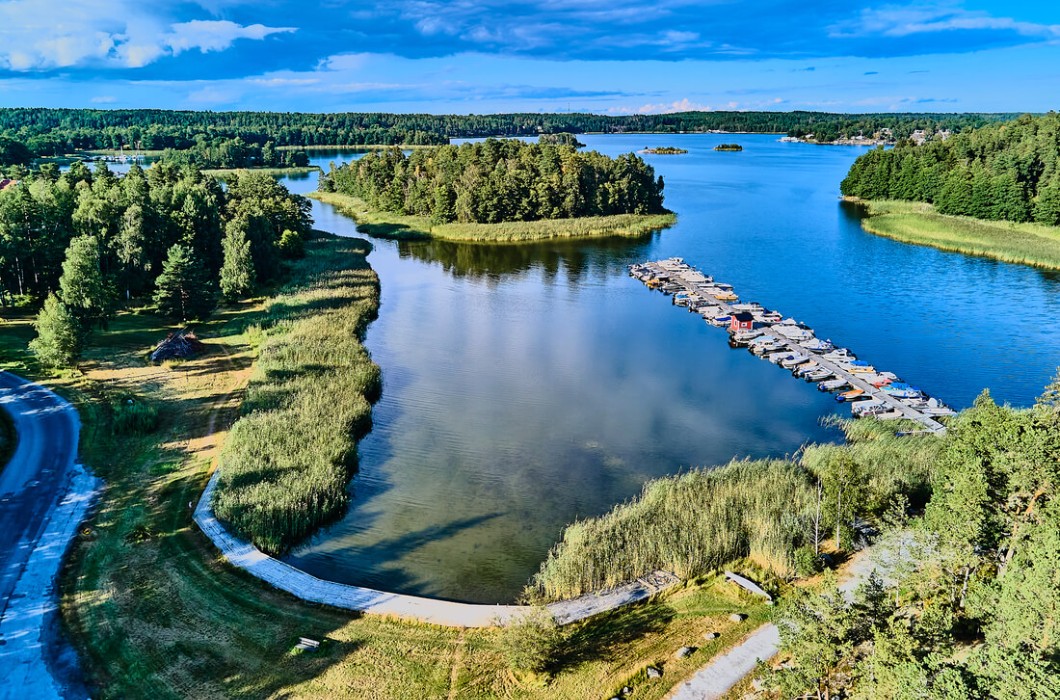
We make our way back to the capital. Stockholm may not be Europe’s largest city, dwarfed by the likes of London, Paris, and Berlin, however it certainly packs a creative punch. But not just that. The art scene here is incredibly adventurous. It goes beyond borders, evolving dramatically and stamping Stockholm as not just a place of art and design but a cultural heavyweight to be reckoned with.
Stay:
WHAT: Radisson Collection Strand Hotel
WHERE: Stockholm, Sweden
WHAT: Blique by Nobis
WHERE: Stockholm, Sweden
